10 Amazing Animals to See in the Galápagos Islands
One of the most extraordinary discoveries you’ll make in the Galápagos Islands isn’t just the chance to see endemic wildlife, but the chance to interact with animals that are remarkably unperturbed by a human presence. Put these 10 animals at the top of your must-meet list.
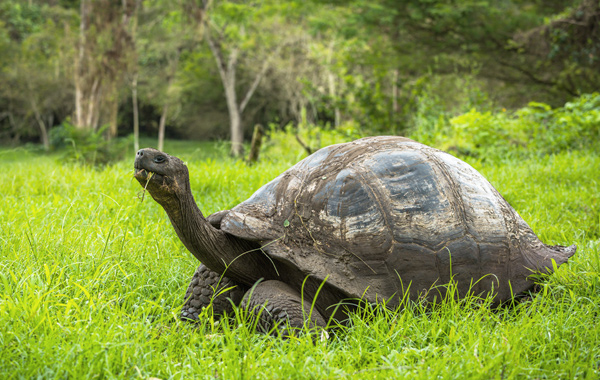
Galápagos Tortoise
The Galápagos’ most famous reptile, these massive, prehistoric-looking giants are among the longest-living vertebrates on earth, able to live for several hundred years and achieving sizes as great as 550 pounds. Find them lumbering about on the islands of Santa Cruz, Isabela and San Cristóbal.
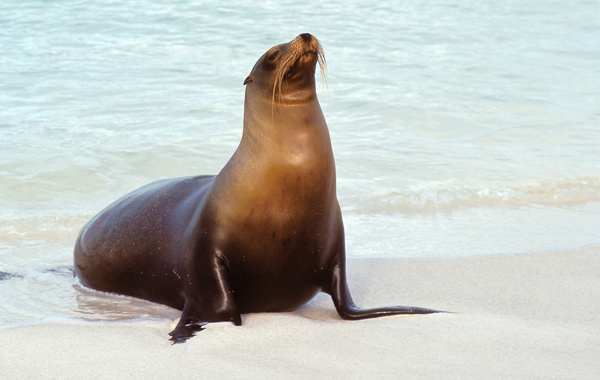
Galápagos Sea Lion
Marine iguanas and sharks may be the first sea creatures divers and snorkelers seek out in the Galápagos, but curious sea lions quickly become a favorite, if only for the ways they surprise and delight us under the water. Widespread across the islands, snoozing sea lions and their barking pups are also common at the beach.
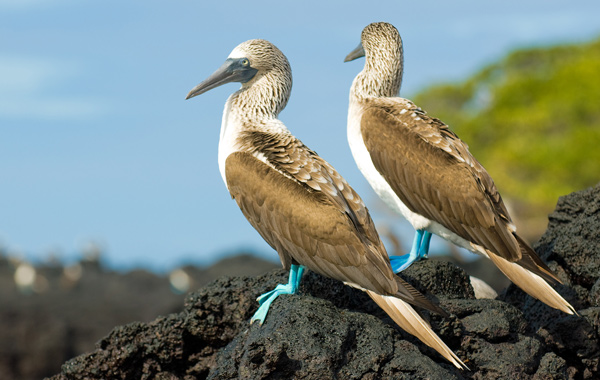
Blue-footed Booby
Male blue-footed boobies put their spectacularly colored feet to work during mating rituals, high-strutting and dazzling potential mates by showing off the bluest feet around. The Galápagos are home to half of all breeding pairs, and some of the best places to find them here are on Española, Genovesa and San Cristóbal islands.
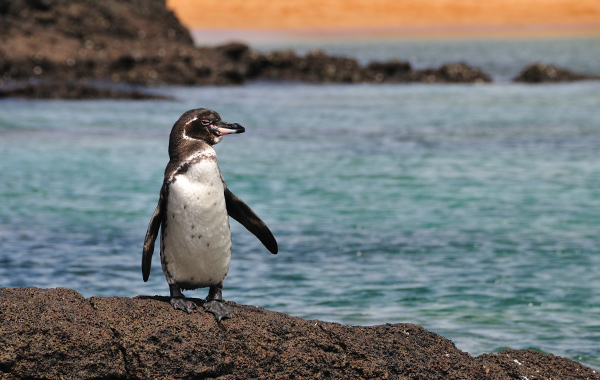
Galápagos Penguin
The only penguin in the world to live in the tropics and north of the equator, the endangered Galápagos penguin has seen its numbers decline by 77 percent as a result of past El Niño weather patterns. Look for these tuxedoed birds, now with a population fewer than 2,000, on Fernandina and Bartolomé islands.
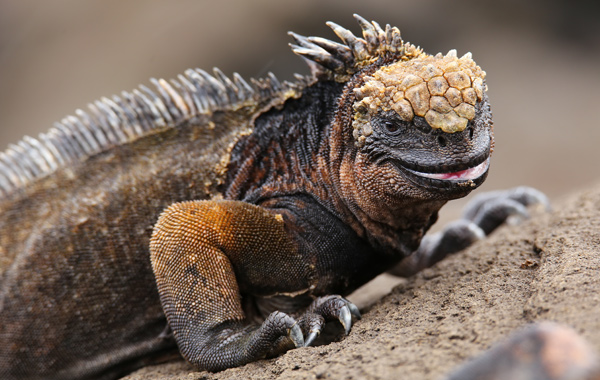
Marine Iguana
The closest you may come to swimming underwater with a Godzilla-like reptile, albeit in miniature, can only happen in the Galápagos. Described as “hideous looking” by Charles Darwin, the endemic marine iguana, a crusty black creature with a “wig” of white salt, is the only seagoing lizard in the world. Find them all across the archipelago.
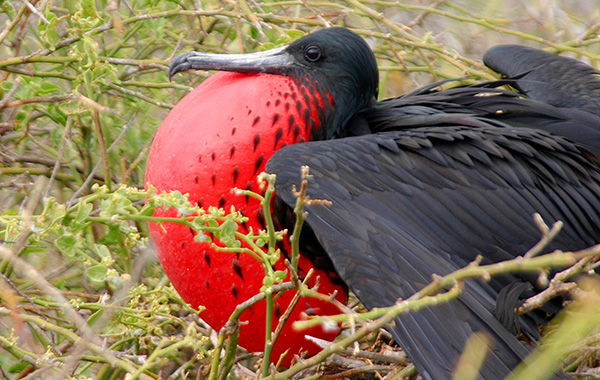
Magnificent Frigate Bird
Magnificent frigate birds are native to the Galápagos and among its most fascinating birds. Observe the male’s spectacular red gular, a large pouch that inflates during breeding season. While females are less visually stunning with a white breast, both males and females boast an impressive wingspan and iridescent black plumage.
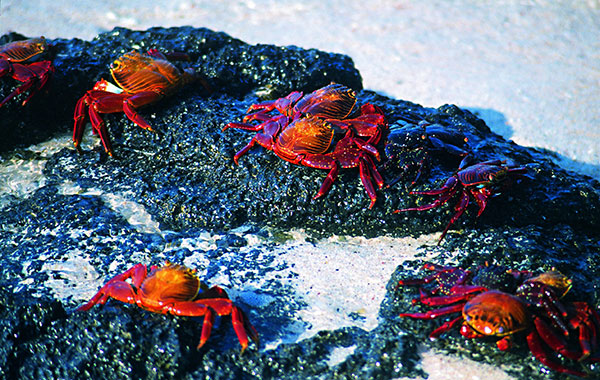
Sally Lightfoot Crab
Coastal scavengers by nature, this brightly colored crab is found throughout the Galápagos islands. Thanks to their diet of sea lion placenta and other crabs, these crustaceans also play several important roles in the ecosystem, from keeping the shore clean of organic debris to eating ticks and other harmful pests off marine iguanas.
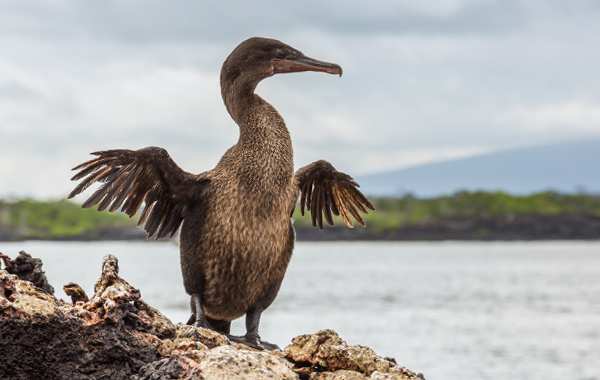
Flightless Cormorant
The only flightless sea bird on the planet apart from penguins, the flightless cormorant with its shocking blue eyes is endemic to the Galápagos, where roughly 1,000 pairs remain on Fernandina and Isabela islands. Adapted to dive for a diet of eels and octopuses, the flightless cormorant is highly vulnerable to a changing climate.
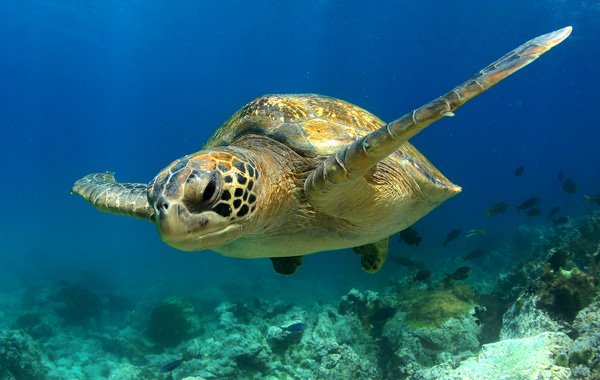
Galápagos Green Turtle
The endangered Galápagos green turtle frequently shows up along coastlines throughout the archipelago, offering ample opportunities to swim in safe proximity of this incredible creature. It is the only species of sea turtle to breed and nest in the Galápagos, with May being prime time to view newborn turtle hatchlings as they set out for the open sea.
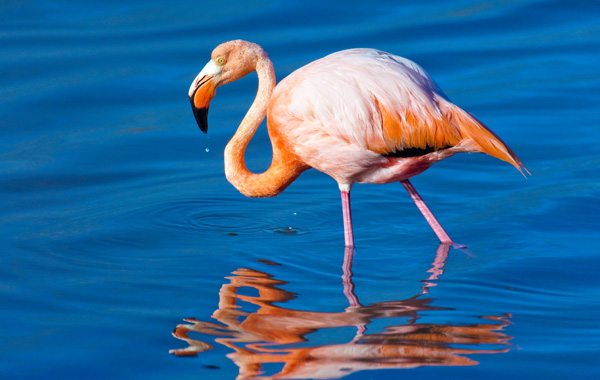
Galápagos Flamingo
Only some 500 of this unique species of flamingo — the largest of the world’s five — are found in the shallow, brackish lagoons that are unique to the Galápagos. Observe them just beyond the coast on Floreana and Isabela islands, where they filter-feed on brine shrimp packed with the carotenoids that bring on the bird’s beautiful pink coloring.
Explore More of the Galápagos & Ecuador with A&K
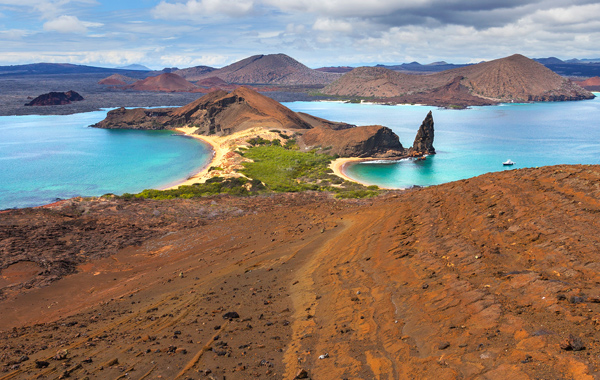
The 7 Best Galápagos Islands
The volcanic archipelago features an assortment of unique and strangely beautiful islands. Our experts narrow down the best-of-the-best to see on your Galápagos cruise.
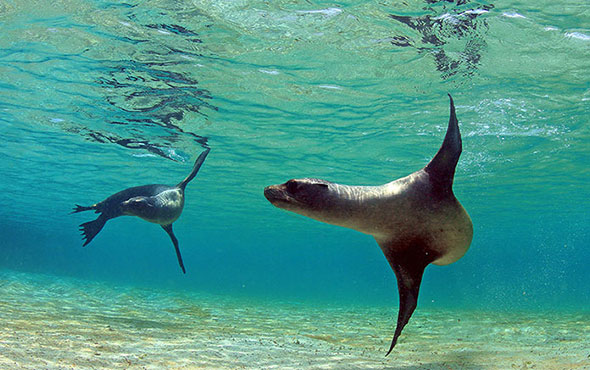
The Galápagos: A Living Wildlife Museum
A&K's smaller groups, local connections, long-time local guides and a nimble vessel make a journey to Ecuador's Galápagos Islands unforgettable.
 The Americas
The Americas Europe, Middle East and Africa
Europe, Middle East and Africa Australia, NZ and Asia
Australia, NZ and Asia





 The Americas
The Americas
 Europe, Middle East and Africa
Europe, Middle East and Africa Australia, NZ and Asia
Australia, NZ and Asia